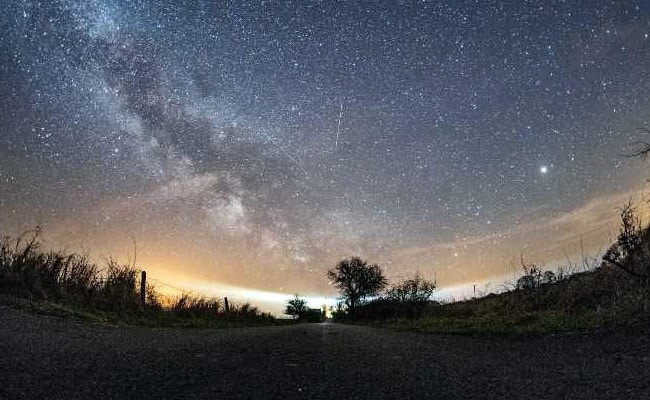
The celestial spectacle shall be seen from April 15 to April 29
Skygazers are in for a deal with, because the annual Lyrid Meteor bathe shall be seen throughout the evening sky as early as April 15, Saturday. The celestial spectacle shall be seen from April 15 to April 29 and can peak on the evening of April 21 and April 22, 2023, in line with NASA.
In the course of the peak, skywatchers can count on to highest numbers of taking pictures stars within the late-night hours of April 21 and it’ll proceed into the early, pre-dawn hours of April 22.
Viewers can count on to see about 18 meteors per hour, Smithsonian journal revealed. Peter Veres, a analysis scientist on the Harvard-Smithsonian Middle for Astrophysics’ joint group with the Minor Planet Middle informed the journal that the Lyrids will not quantity as many because the famed summer season Perseids, however the bathe continues to be notable-the Lyrids are certainly one of nearly ten meteor showers that yield greater than ten meteors per hour at their top.
Based on EarthSky.org, the very best viewing time will come simply earlier than daybreak, which is the darkest. Nevertheless, the 2023 Lyrid meteor bathe could also be seen within the sky as early as 10:30 p.m. on the nights that it peaks.
Based on NASA, the Lyrids are recognized for his or her quick and shiny meteors. Lyrids do not have a tendency to go away lengthy, glowing mud trains behind them as they streak via the Earth’s environment, however they will produce the occasional shiny flash referred to as a fireball.
The Lyrid meteors in line with NASA have been noticed for the final 2,700 years and are well-known to go away behind glowing mud trails and streaks within the evening sky as they cross via. Named after the Lyra constellation of stars, the meteors are a part of a particles discipline left behind by Comet Thatcher which is presently hurtling via the photo voltaic system away from the Solar. It can reverse its trajectory in one other 45 years. The comet is assessed as a long-period comet and it takes it 415 years to orbit the solar as soon as.

